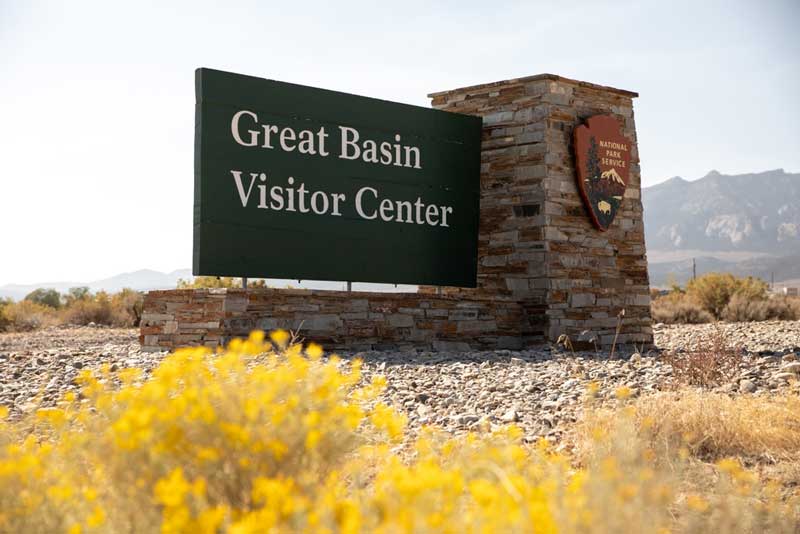Great Basin National Park stands as one of America’s most underappreciated natural treasures. Hidden in the remote wilderness of eastern Nevada, It offers an extraordinary journey from desert valleys to alpine peaks. Established in 1986, this 77,180-acre park protects a complete cross-section of the Great Basin ecosystem.
This ranges from sagebrush valleys at 4,000 feet to the 13,063-foot summit of Wheeler Peak. Located about 70 miles east of Ely, Nevada, and 234 miles southwest of Salt Lake City, Utah, this isolated gem provides an authentic wilderness experience.
The park’s crown jewel is the ancient bristlecone pine forest, home to some of the oldest living trees on Earth, with specimens over 4,000 years old. These gnarled, weathered sentinels have witnessed millennia of history. The park also features the fascinating Lehman Caves, a limestone cavern system decorated with rare shield formations.
What makes Great Basin National Park truly special is its incredible diversity packed into a relatively compact area. Visitors can explore mysterious underground caves in the morning, hike through ancient forests in the afternoon, and experience some of the darkest night skies in the country after sunset.
The park’s remote location means that those who make the journey are rewarded with solitude and pristine wilderness. From challenging alpine peaks to gentle nature walks, from guided cave tours to world-class stargazing, Great Basin offers adventures that cater to every outdoor enthusiast.
Things to Do in Great Basin National Park
1. Explore the Magnificent Lehman Caves
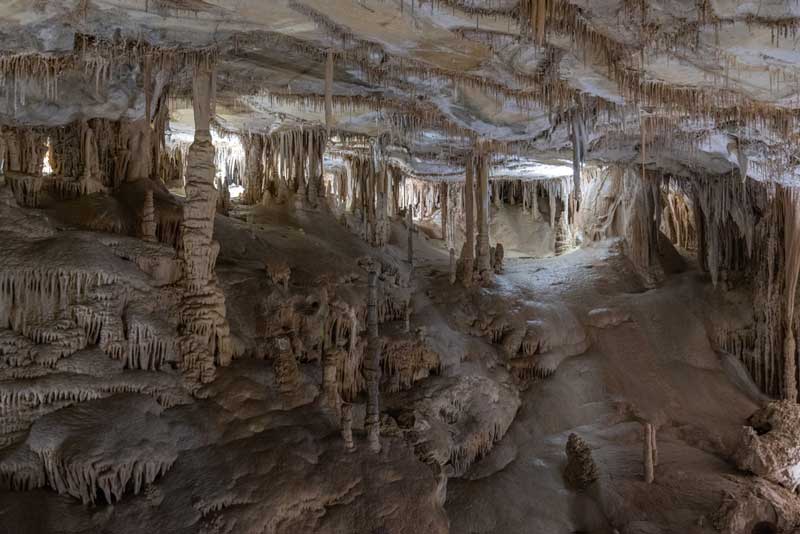
Lehman Caves
Lehman Caves represents one of the most spectacular limestone cave systems in the American West. It features over 2 miles of mapped passages adorned with rare and beautiful formations. Discovered in the 1880s, these caves showcase an underground wonderland of stalactites, stalagmites, flowstone, and the unique shield formations.
The cave tours reveal a series of interconnected chambers, each with its own character. The Gothic Palace features towering formations, while the Lodge Room showcases delicate flowstone. The caves’ most famous features are the shield formations, thin, circular calcite plates that are extremely rare.
Travel Tips: Cave tours are offered year-round and must be booked in advance, especially during peak season (June-September). 90-minute tours cost $12 for adults and $6 for children. Wear sturdy shoes and bring a light jacket as the caves are cool (50°F). Photography is allowed but flash may damage formations. Tours are limited to 20 people and often sell out.
2. Hike Among Ancient Bristlecone Pines
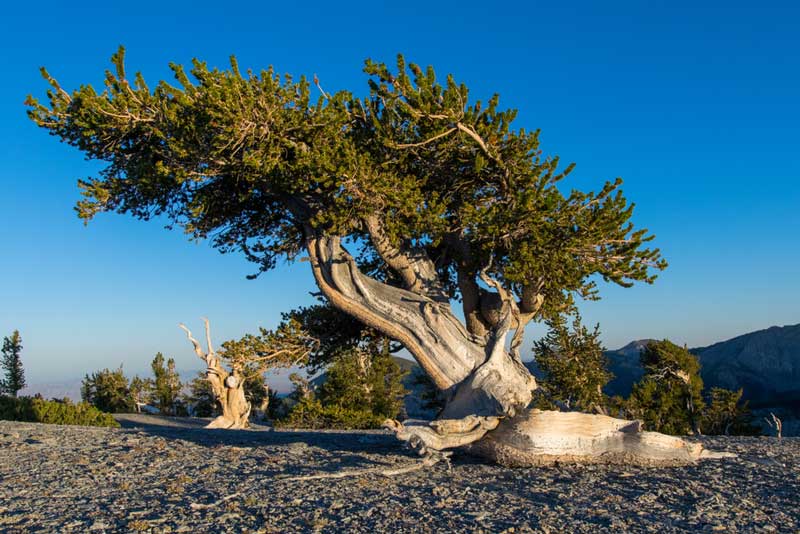
Bristlecone Pines
The bristlecone pine grove trail offers one of the most profound nature experiences in North America. It leads visitors through a forest of the world’s oldest living trees. These ancient bristlecone pines, some over 4,000 years old, are living links to the distant past. The short but steep 2.8-mile round-trip trail climbs from 10,000 feet to 11,000 feet elevation.
The trail begins in a dense forest of Engelmann spruce and subalpine fir before transitioning to the harsh, windswept environment where bristlecone pines thrive. Their twisted, gnarled forms tell stories of survival against extreme weather.
Travel Tips: The trail is typically accessible late June through September, depending on snow. Start early to avoid afternoon thunderstorms. High elevation can cause altitude sickness, so ascend slowly and stay hydrated. Bring warm layers. The trail is moderately strenuous. Allow 3-4 hours.
3. Conquer Wheeler Peak
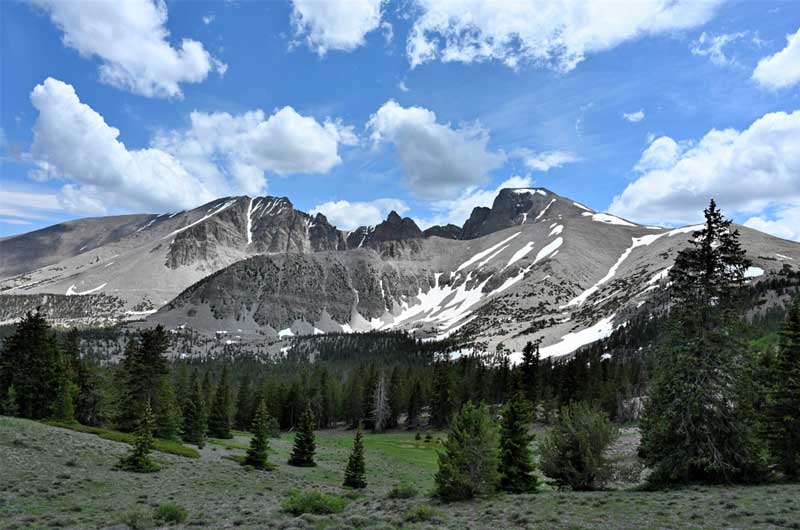
Wheeler Peak
Wheeler Peak, Nevada’s second-highest mountain at 13,065 feet, offers one of the most challenging and rewarding hiking experiences. The 8.6-mile round-trip trail gains over 2,900 feet in elevation. The summit provides spectacular 360-degree views of the surrounding basin and range country.
The hike begins in dense forest and gradually transitions through increasingly sparse vegetation. Above treeline, hikers enter an alpine environment. The final approach involves scrambling over loose rock and navigating potentially dangerous conditions, including sudden weather changes.
Travel Tips: This strenuous hike requires excellent physical conditioning. Start before dawn to avoid afternoon thunderstorms and allow 8-10 hours. Bring layers, rain gear, plenty of water, and high-energy snacks. The trail is typically accessibleJuly through September. Check forecasts and turn back if storms threaten.
4. Experience World-Class Stargazing
Great Basin National Park boasts some of the darkest night skies in the United States, making it a premier destination for astronomy enthusiasts. The park’s remote location, far from light pollution, reveals the Milky Way in stunning detail. The park regularly hosts astronomy programs and star parties.
The combination of high elevation, dry air, and minimal light pollution creates ideal conditions. Visitors can see distant galaxies, nebulae, and star clusters. The park’s astronomy programs often feature powerful telescopes.
Travel Tips: The best stargazing occurs during new moon periods. Bring red flashlights to preserve night vision and warm clothing. The park offers astronomy programs from spring through fall. Summer offers warmer temperatures, while winter provides the clearest skies.
5. Discover the Alpine Lakes Loop
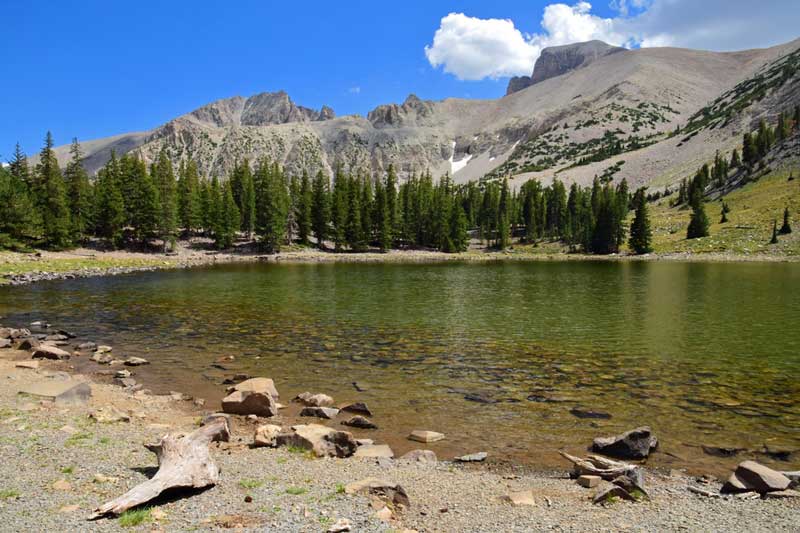
Alpine Lakes Loop
The Alpine Lakes Loop provides access to some of the most pristine high-elevation lakes in Nevada. This challenging 2.7-mile loop trail leads to Teresa Lake and Stella Lake, two beautiful alpine tarns below Wheeler Peak. The lakes provide perfect reflections of the surrounding peaks.
The trail begins at the Wheeler Peak Campground and climbs steadily through subalpine forests. Teresa Lake sits in a dramatic cirque. Stella Lake offers excellent opportunities for photography and wildlife viewing, with chances to spot pikas and marmots.
Travel Tips: The trail is typically accessible late June through September. Start early to avoid afternoon thunderstorms. Bring layers as weather can change rapidly. The trail involves significant elevation gain and loss, so wear sturdy hiking boots. Fishing is allowed with proper Nevada licenses.
Meet the top attractions in USA, here is a guide on the top things to do in Mesa Verde National Park and things to do in Pinnacles National Park.
6. Explore the Lexington Arch
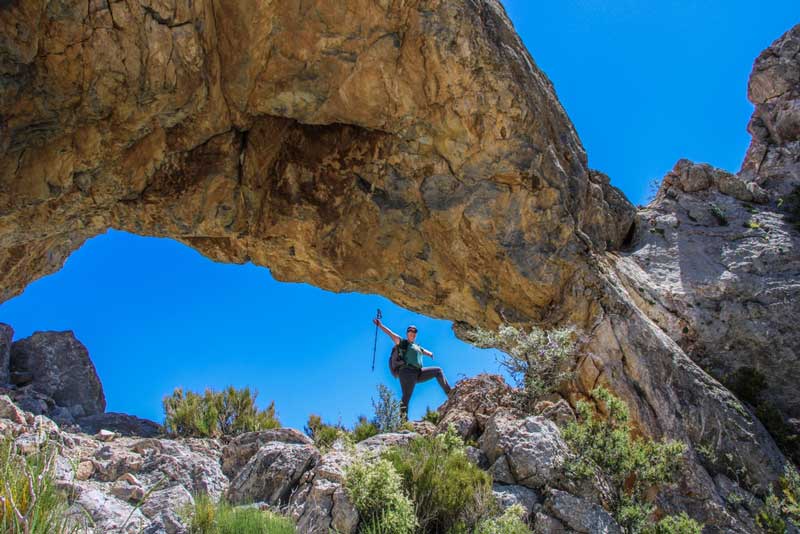
Lexington Arch
The Lexington Arch stands as one of the most unique geological features in Great Basin National Park. It’s a rare limestone natural arch formed by erosion. This impressive 75-foot span requires a challenging 3.4-mile round-trip hike through diverse terrain.
The trail to Lexington Arch passes through several distinct ecosystems. The arch itself sits in a dramatic setting. The geological processes that created this arch are different from those that formed the famous arches of Utah.
Travel Tips: The trail is typically accessible from late spring through fall, but creek crossings can be dangerous during snowmelt. Wear waterproof boots and bring trekking poles. The trail is moderately strenuous. Allow 4-5 hours. Bring plenty of water and snacks.
7. Walk the Nature Trails Near the Visitor Center
The area around the Great Basin National Park Visitor Center offers several easy nature trails. These provide excellent introductions to the park’s diverse ecosystems without strenuous hiking. The Mountain View Nature Trail, Lehman Creek Trail, and other short walks showcase the transition from sagebrush desert to mountain forest.
The trails feature interpretive signs that explain the area’s ecology, geology, and human history. Visitors can learn about the Great Basin’s unique climate and adaptations of plants and animals. The trails also provide opportunities to observe wildlife.
Travel Tips: These trails are accessible year-round, though winter conditions may require microspikes or snowshoes. They are suitable for all fitness levels, and most are wheelchair accessible. Bring water and sun protection. Early morning and evening provide the best wildlife viewing.
8. Camp Under the Stars
Great Basin National Park offers exceptional camping opportunities. The park features four campgrounds at different elevations. Upper Lehman Creek Campground provides the highest elevation camping, while Lower Lehman Creek Campground offers more protection.
The park’s remote location and minimal light pollution make camping here an extraordinary experience. Campfires are permitted in designated areas, creating opportunities for evening gatherings. Campgrounds provide access to excellent hiking trails.
Travel Tips: Reservations are not accepted; all sites are first-come, first-served. Arrive early during peak season (June-September). Bring warm sleeping gear. Water and restrooms are available. Firewood can be purchased at the visitor center. Be prepared for wildlife encounters and store food properly.
9. Photograph the Dramatic Landscapes
Great Basin National Park offers endless opportunities for photography enthusiasts. The park’s diverse ecosystems provide subjects ranging from intimate macro photography to sweeping landscape vistas. Changing light conditions create different moods and photographic opportunities.
The park’s geological diversity provides numerous photographic subjects. These include ancient bristlecone pines, Lexington Arch, and Lehman Caves. Seasonal changes bring different photographic opportunities, from wildflowers to fall aspen colors to winter snow scenes.
Travel Tips: Bring a sturdy tripod for low-light photography. Protect camera equipment from extreme temperature variations. Early morning and late afternoon provide the best lighting. For night photography, bring extra batteries. Respect fragile environments and don’t disturb wildlife.
10. Observe Wildlife in Their Natural Habitat
Great Basin National Park supports a diverse array of wildlife. The park’s elevation gradient creates multiple habitats. These support different species, from desert bighorn sheep in lower elevations to pikas and marmots in alpine zones.
The park’s remote location and minimal human disturbance mean that wildlife behaviors are more natural. Early morning and evening provide the best wildlife viewing opportunities. Transition zones between different ecosystems are particularly productive.
Travel Tips: Bring binoculars and telephoto lenses. Maintain safe distances from all wildlife and never feed animals. Dawn and dusk provide the best viewing opportunities. Learn to identify animal tracks. The visitor center provides information about current wildlife activity.
11. Explore the Historic Lehman Caves Visitor Center
The Lehman Caves Visitor Center serves as the gateway to Great Basin National Park. It houses fascinating exhibits about the park’s natural and cultural history. The center features displays about the area’s geology, ecology, and human history.
The visitor center also showcases the cultural history, including ranching heritage and early cave exploration. Historical photographs and artifacts tell the story of Absalom Lehman. The center’s bookstore offers excellent resources.
Travel Tips: The visitor center is open year-round with seasonal hour variations. Start your visit here for current information. Rangers provide excellent advice. The center offers educational programs and guided walks during peak season. Allow 30-60 minutes.
12. Hike the Osceola Ditch Trail
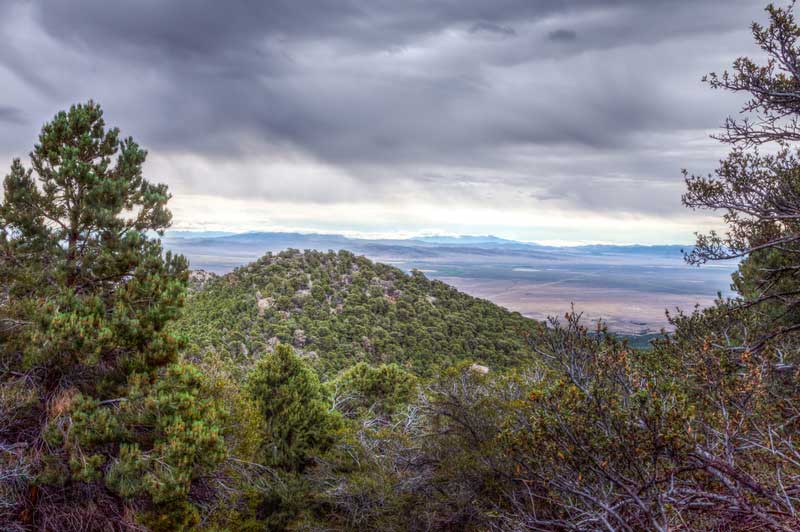
Osceola Ditch Trail
The Osceola Ditch Trail provides a unique perspective on the area’s mining history. This 3.4-mile round-trip trail follows a historic water ditch built in the 1880s to support gold mining. The trail provides insights into the challenges faced by early miners.
The trail passes through several distinct plant communities. The historic ditch itself is an impressive engineering feat. Interpretive signs explain the mining history and environmental impacts.
Travel Tips: The trail is typically accessible from late spring through fall. Wear sturdy hiking boots as some sections can be rocky. Bring plenty of water and sun protection. The trail offers minimal shade, so early morning or late afternoon hiking is recommended in summer. Allow 2-3 hours.
13. Experience the Changing Seasons
Great Basin National Park offers dramatically different experiences throughout the year. Each season brings unique beauty and outdoor activities. Spring brings wildflower blooms, while summer offers access to high-elevation trails. Fall transforms the landscape with brilliant aspen colors.
Winter in Great Basin National Park creates a magical landscape of snow-covered peaks. While many high-elevation trails become inaccessible, the park offers excellent opportunities for snowshoeing and cross-country skiing.
Travel Tips: Each season requires different preparation and equipment. Spring can be muddy. Summer brings thunderstorms and temperature variations. Fall offers stable weather but can be crowded. Winter requires warm clothing and may need snow chains. Check road conditions.
14. Learn Through Ranger Programs
Great Basin National Park offers excellent educational programs led by knowledgeable rangers. They share their expertise about the park’s natural and cultural resources. These programs range from guided cave tours to evening campfire programs and astronomy presentations.
The programs are designed for various audiences. Rangers share their passion for the park and help visitors develop a deeper appreciation for the complex ecosystems. Programs also address conservation issues.
Travel Tips: Program schedules vary by season and are available at the visitor center. Many programs require advance registration. Dress appropriately for outdoor programs. Evening programs can be cold, so bring warm layers. Programs are typically free.
15. Discover Hidden Gems and Secret Spots
Great Basin National Park rewards explorers who venture beyond the main attractions. The park’s remote location and extensive wilderness areas contain numerous unmarked trails, scenic overlooks, and unique geological features. These hidden areas offer the chance to experience the park as early explorers did.
The park’s backcountry contains numerous lakes, peaks, and valleys that see few visitors. These areas require more advanced hiking skills. The park’s diverse geology creates numerous hidden canyons and rock formations.
Travel Tips: Always inform rangers of your backcountry plans and carry proper navigation equipment. These areas often lack marked trails, so GPS devices and topographic maps are essential. Bring emergency supplies. Weather can change rapidly. Consider hiring a guide for your first backcountry adventures.
Check out more things to do in USA. Here is a guide on things to do in Zion National Park and things to do in White Sands National Park for a fun time.
Local Travel Tips and Practical Information
Transportation and Access
Great Basin National Park is located in remote eastern Nevada, accessible primarily via Highway 488 from Highway 50. The nearest major airport is in Salt Lake City, Utah, approximately 234 miles away. The park is about 70 miles from Ely, Nevada, the nearest town with comprehensive services. The park road is well-maintained but can be challenging in winter, requiring snow chains or four-wheel drive.
Nearby Towns and Services
Baker, Nevada, located 5 miles from the park entrance, offers basic services including a cafe, gas station, and limited lodging. Ely, Nevada, provides more comprehensive services including hotels, restaurants, grocery stores, and medical facilities. The historic town features several attractions related to mining history and serves as a good base.
Where to Stay
The park offers four campgrounds with varying levels of development and accessibility. Upper Lehman Creek Campground provides the highest elevation camping, while Lower Lehman Creek offers more protection. Border Inn in Baker provides the closest lodging. Ely offers numerous hotel options.
Best Times to Visit
The park is accessible year-round, but the best visiting conditions typically occur from late spring through early fall. Summer offers the warmest temperatures and access to high-elevation trails. Spring and fall provide more comfortable hiking conditions and fewer crowds. Winter visits offer unique experiences but require proper preparation for cold temperatures.
Weather Considerations
Great Basin National Park experiences extreme temperature variations due to its elevation range and desert location. Summer temperatures can exceed 90°F in the valleys while remaining cool at higher elevations. Winter temperatures can drop well below freezing. Afternoon thunderstorms are common in summer, and weather can change rapidly at high elevations.
Frequently Asked Questions
What should I know about the elevation at Great Basin National Park?
Great Basin National Park spans elevations from about 4,000 feet in the valleys to over 13,000 feet at Wheeler Peak’s summit. This dramatic change can cause altitude sickness. Symptoms include headaches, nausea, and fatigue. It’s important to ascend gradually, stay hydrated, and be aware of your body’s response. Campgrounds range from 5,300 to 7,300 feet.
Are cave tours suitable for people with claustrophobia?
Lehman Caves tours involve walking through underground passages, some of which are narrow and low-ceilinged. The caves are well-lit and have multiple exits, but people with severe claustrophobia may find the experience uncomfortable. Tours last about 90 minutes and cover approximately 0.6 miles. If you have concerns, speak with rangers before booking. The caves maintain a constant 50°F.
What’s the best way to see the ancient bristlecone pines?
The bristlecone pine grove is accessed via a 2.8-mile round-trip trail that gains about 1,000 feet in elevation. The trail begins at about 10,000 feet and can be challenging due to thin air and steep sections. The best time to visit is late June through September when the trail is typically snow-free. Start early to avoid afternoon thunderstorms. Allow 3-4 hours to appreciate these ancient giants.
Conclusion
Great Basin National Park stands as one of America’s most remarkable yet undervisited national parks. It offers an extraordinary diversity of experiences within its remote Nevada location. From the underground wonders of Lehman Caves to the ancient bristlecone pines, from challenging alpine peaks to peaceful stargazing opportunities, the park provides adventures that satisfy every type of outdoor enthusiast.

